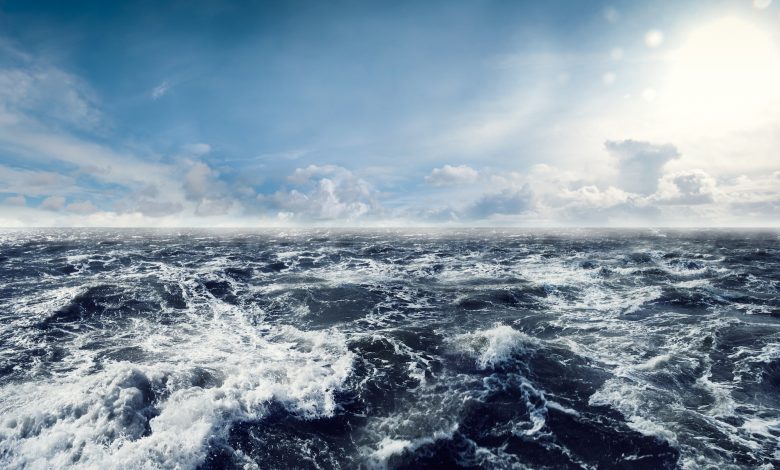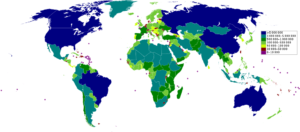Top 10 Things You Didn’t Know About the Ocean

The ocean holds countless mysteries and surprising facts that many people aren’t aware of. From its role in regulating Earth’s climate to its mind-bending geological features. The ocean’s complexities and significance extend far beyond common knowledge, revealing interconnected systems vital to Earth’s survival. Here, we have listed some of the top 10 Things You Didn’t Know About the Ocean.
1. Whales act as carbon storage units
When whales die and sink to the ocean floor, they transfer massive amounts of carbon from surface waters to the deep sea—equivalent to thousands of tons annually—where it remains locked away for centuries
2. Earth’s longest mountain range is underwater
The Mid-Oceanic Ridge spans 40,390 miles (65,000 km) and rises to an average depth of 8,000 feet, making it 10 times longer than the Andes. This submerged volcanic chain contains 90% of Earth’s volcanic activity.
As new oceanic crust is created, this ridge hosts numerous hydrothermal vents that spew mineral-rich water, nurturing unique ecosystems adapted to extreme conditions. With a structure that resembles the stitches on a baseball, the ridge system—exemplified by the well-known Mid-Atlantic Ridge—is clearly mapped on global topography charts. Studying these features helps scientists model tectonic plate movements over millions of years and predict natural disasters like earthquakes and volcanic eruptions.
3. The deepest point could swallow Mount Everest
The Mariana Trench plunges 36,200 feet (11km) deep in the Pacific Ocean, with pressure reaching 8 tons per square inch—enough to crush submarines.
This deepest known point in the ocean—Challenger Deep in the Mariana Trench—is roughly 11,000 meters (about 36,000 feet) below sea level, while Mount Everest rises about 8,848 meters (29,029 feet) above sea level. If you inverted Mount Everest and placed it at the bottom of the trench, its peak would still lie roughly 2,100 meters (around 7,000 feet) beneath the surface, meaning the trench would completely engulf the mountain. This comparison is often used to illustrate just how extreme the depth of the Mariana Trench really is.
4. Oceans produce most of Earth’s breathable oxygen
The world’s oceans play a vital role in the production of oxygen on Earth. Marine photosynthesizers, such as phytoplankton, algae, seaweed, and cyanobacteria, use carbon dioxide, water, and sunlight to produce food, releasing oxygen as a byproduct. Marine plants and algae generate 70-80% of our oxygen, surpassing all land-based forests combined.
A large proportion of the oxygen produced by the ocean is consumed by marine life and decomposition processes within the ocean itself. That said, the burial of organic carbon in the ocean helps to maintain atmospheric oxygen levels by preventing the oxygen generated during photosynthesis from being used up in the decomposition of organic matter.
5. More than 70% of Earth’s wildlife lives in oceans
Despite covering 71% of the planet’s surface, oceans contain nearly all terrestrial biodiversity, with an estimated 91% of marine species still undiscovered. Oceans hold a significant portion of Earth’s wildlife. Some sources state that the ocean contains 94% of the planet’s wildlife.
6. Most of the ocean species live near the seafloor
Contrary to popular belief, most marine life thrives in darkness, relying on “marine snow” (organic debris) falling from surface waters rather than sunlight.
It’s true that the seafloor is home to a significant amount of marine life. Deep-sea corals, for example, create structures that provide habitats for various species. One study exploring deep-sea coral distribution in the Phoenix Islands and Tokelau Ridge Seamounts, observed 12,828 deep-water corals and 167 identifiable morphospecies. Octocorals were the dominant taxonomic group.
7. Underwater volcanoes create 700°F “black smokers”
Hydrothermal vents, including black smokers, are found near volcanically active areas on the seabed. Hydrothermal vents spew mineral-rich fluids hot enough to melt lead, yet support unique ecosystems through chemosynthesis—a sunlight-independent energy process.
These vents form when seawater seeps through cracks in the ocean floor and is heated by hot rock deep below the crust, reaching temperatures as high as 400°C (752°F). The hot water erupts from vents on the sea floor as “smoky fountains”. Black smokers are chimney-like structures that emit a cloud of black material with high levels of sulfur-bearing minerals. When the superheated water comes into contact with the cold ocean water, the dissolved minerals precipitate, forming the black, chimney-like structures. The water emitted from black smokers is highly acidic.
8. Hidden underwater rivers and lakes exist
Hidden underwater rivers and lakes exist in the ocean due to phenomena such as seawater seeping through salt layers on the seafloor. Dense saltwater flows create submerged liquid landscapes, complete with shorelines and waves, particularly in the Gulf of Mexico and Mediterranean Sea.
Here’s a summary of these unusual formations:
- Formation: Underwater lakes and rivers form when seawater seeps through thick layers of salt beneath the seafloor. The water dissolves the salt, causing the layer to collapse and form depressions. The dissolved salt makes the water denser, allowing it to settle into these depressions, creating rivers or lakes.
- Characteristics: These underwater formations can vary in size, from a few feet to several miles in length, and are similar to those on land, even having shorelines and waves.
- Ecosystems: Some creatures, like mussels, have adapted to these salty environments, obtaining nutrients from bacteria that convert methane and other chemicals into energy.
- Underground lakes: Underground lakes can also occur naturally in karst areas, where soluble rocks weather away, leaving caves where water can accumulate. An underground lake is any body of water similar in size to a surface lake that exists mostly or entirely underground. The largest subterranean lake is located in Dragon’s Breath Cave in Namibia.
- “Underwater river”: In the Yucatán Peninsula, divers can witness what appears to be an underwater river at Angelita Cenote. This is caused by a hydrogen sulfide cloud at the halocline, where saltwater and freshwater meet. Organic chemicals create a foggy layer that looks like a river.
- Undersea rivers: Undersea rivers are formed by rivers of sediment that scour the seabed. Sonar mapping revealed these submarine channels in the 1980s. Many extend from the mouths of major rivers like the Amazon and the Congo
9. Coral reefs have medical superpowers
Coral reefs are considered “medicine chests of the sea” because they are a rich source of chemical compounds with medicinal properties. These natural underwater pharmacies have been recognized as an important source of new drugs to treat diseases such as cancer, arthritis, Alzheimer’s, bacterial infections, viruses, and heart disease. More than half of all new cancer drug research focuses on marine organisms.
Coral’s bone-like structure aids human grafting, while deep-sea sponges contain compounds used in cancer treatments and COVID-19 diagnostics.
10. The Milky Sea Effect
The milky sea effect is a bioluminescent phenomenon where large areas of the ocean glow with a widespread and steady whitish light. The Milky seas are caused by bioluminescent bacteria, often Vibrio harveyi, that colonize microalgae. These bacteria emit light, creating a uniform glow across the ocean surface.
This phenomenon can cover vast areas, up to 100,000 square kilometers, and persist for days or weeks. The glow is visible from satellites
How it Works?
The bioluminescent response is triggered when the bacteria populations reach a critical concentration, a process known as quorum sensing. The purpose of the glow may be to attract fish, as the bacteria thrive in fish guts.
Conclusion
The above are just a few of some of the top things we do not know about the ocean. From fueling economies to harboring unsolved enigmas, the ocean remains a dynamic frontier. Yet, human pressures—from overfishing to warming—threaten its delicate balance, underscoring the urgency of initiatives like the EU’s 2030 marine protection goals.
These revelations highlight the ocean’s complexity and vulnerability. From climate regulation to medical breakthroughs, marine ecosystems play vital roles that science is only beginning to understand. With 95% of oceans still unexplored, future discoveries may reshape our relationship with Earth’s final frontier.





